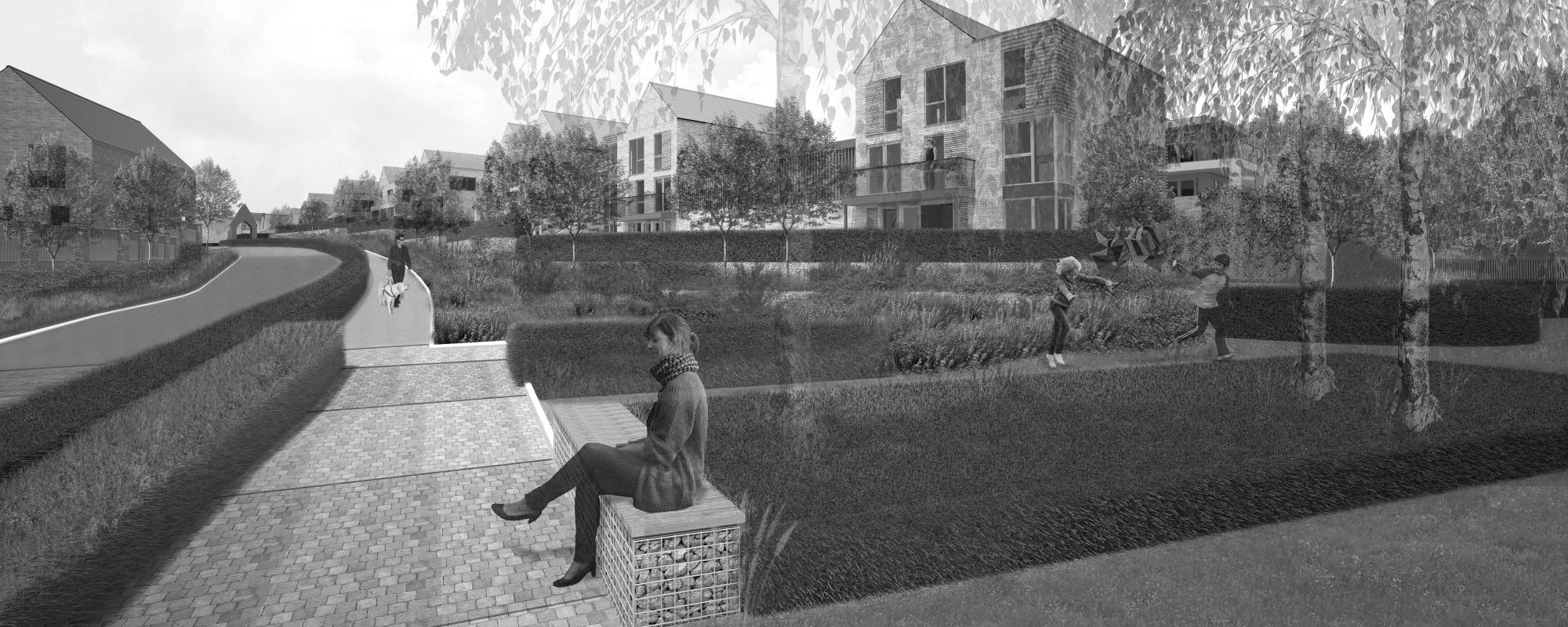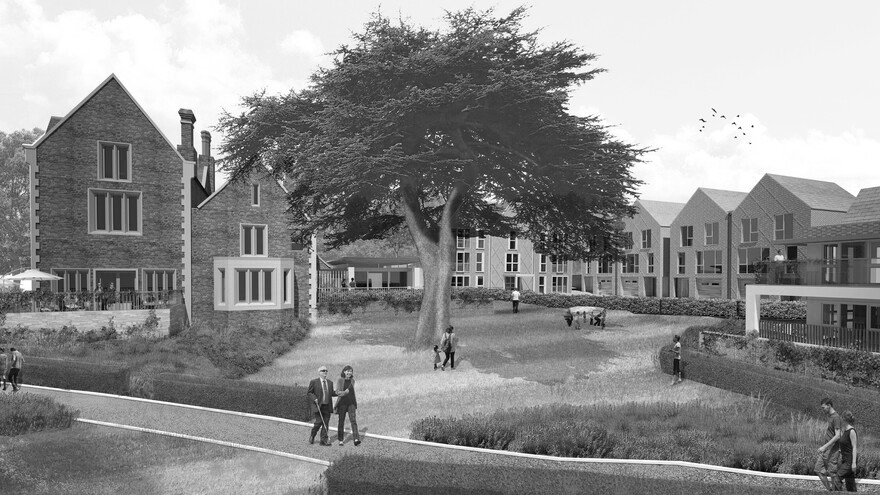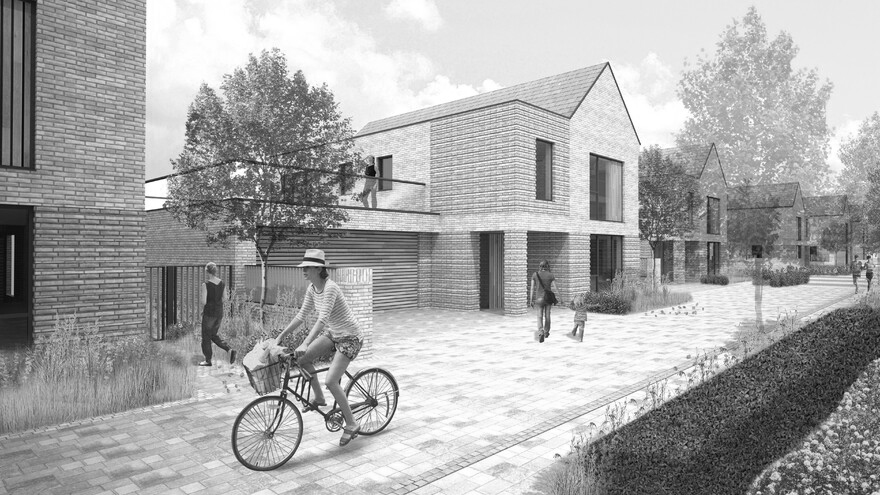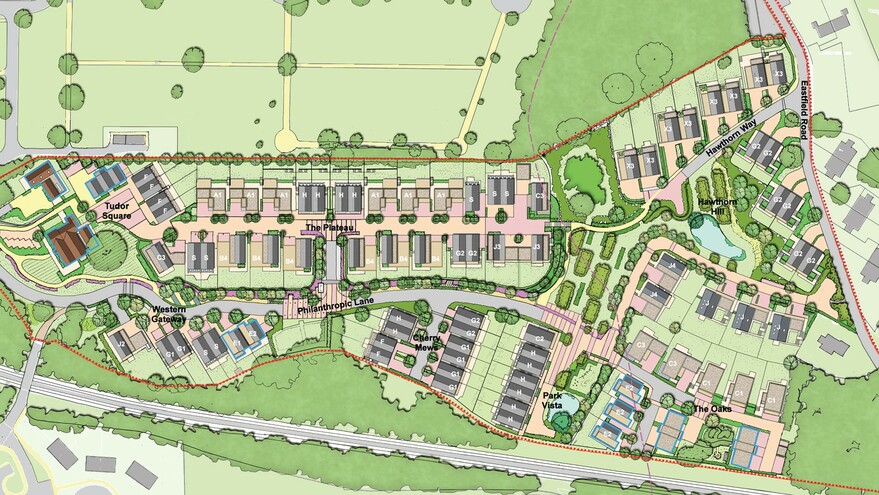Get updates from The Developer straight to your inbox Yes, please!
Designing for the blind: what Countryside learned from the RNIB
An innovative partnership on green belt land between Countryside Properties and the Royal National Institute of Blind People has lessons to teach about developing accessible, inclusive places. Christine Murray speaks to Simon Cocks of Countryside to find out more
“It’s very much intended to be the exemplar of how the developer could work with a charity to provide accommodation,” says Simon Cocks, associate director of Countryside Properties.
Cocks is talking about Royal Hill Park, a 16-acre site on the green belt in Surrey that when complete, will feature 102 homes, including 77 three, four and five-bedroom private properties, plus facilities and housing for the Royal National Institute of Blind People (RNIB).
This rare partnership between Countryside and the charitable RNIB sprung out of the last recession. Previously the site featured a mixture of listed and 1960s properties, but failed to meet the Care Quality Commission standards and needed major modernisation. RNIB had two options: move out or to enter into a joint venture with a developer that would fund the necessary work.
Without the RNIB, there is no chance Countryside would have gained planning for private housing on the green belt; and without Countryside, RNIB would not have been able to redevelop the dated 1960s community-living facility and restore the listed buildings on site.
So began an innovative partnership that sees the design and development of an accessible enclave with lessons to teach on a site that was once “a cold and empty place that felt more like an institution than a community”, Cocks decries.
Royal Hill Park needs to accommodate the blind, partially sighted and residents with complex needs in addition to attracting affluent private residents to take up the large new houses on its leafy suburban streets.
At Royal Hill Park, the buzz word is inclusivity. The design process with Gardner Stewart Architects has required attention to detail and input from carers, residents and relatives. “The idea was that there would be nowhere that looks like it’s specifically designed for the able-bodied people or disabled people,” says Cocks.
“There’s been a very iterative design process in comparison to a product that will go straight into the private market,” Cocks adds.
The development presented a number of challenges. It was difficult to obtain planning consent and Countryside had to provide a fund for future maintenance. “It’s been a technically challenging scheme to say the least,” says Cocks.
The site is split on two council districts, so there was the added difficulty of juggling their different priorities. Reigate & Banstead Council was interested in appropriate design proposals sympathetic to the listed Tudor buildings, while Tandridge District Council wanted a landscaping strategy that maintained the greenbelt.
Countryside also had to make accessible the uneven topography of the Royal Hill Park plot which has a 21m drop from north to south. “The hill on the east was pretty much like a ski slope on the way down, so it was difficult for anyone to walk up the sides.”
“The entire development will comply with Lifetime Homes requirements, in terms of the gradients and the surfacing and the materials,” assures Cocks.
“The whole concept of the development is inclusivity”
Wheelchair access across the public realm of the site was a starting point. As for the internal spaces, the RNIB housing is all wheelchair adaptable and half is fully wheelchair accessible.
Most interesting is how the development sought to integrate a way for the blind to navigate the site. Previously the site featured yellow balustrades which made the whole place feel institutional.
Working with LDC landscape architects, the new development features a sensory trail and brightly coloured house doors.
Hearing touch and scent will lead blind and partially blind people along the 2.4m wide trail and through the development. Hedges separate crossings as well as different coloured paving. Along the route, bursts of colour from plants will be indicators for the partially blind – yellow being the most visible, but also aromatic lavender and rosemary will suggest a location on the plan. Lamp column sizes and shapes will also differ at points.
There are shared surface areas and it is less clear how these will function given they are the subject of debate, but Cocks says the level of traffic in these areas is very low.
Underfoot, different materials also assist navigation. “You’ve got rumble strips of different sizes going throughout the scheme so if you’re going along the footpath and you hear a car on a rumble strip you can tell where you are... in the future when everybody has got electric cars you can hear the sound of the rumble strips going past,” says Cocks.
Inside the houses, colour contrast is equally important, with darker walls that contrast white skirting boards and architraves. Cocks says all housing will be painted this way, so that openings, doors and light switches are clearly visible, although “people can paint the rooms colours they like when they move in,” he adds.
“It’s been very much a learning process for me and anybody who has been involved in this because there’s so many little things like the changes in the material and the sensory scale we can incorporate on any future development without it being specific to RNIB.”
“It’s been very much a learning process for me and anybody who has been involved”
As for the listed buildings on site, the Grade-II, 14th-century farmhouse is refashioned as an RNIB office and support hub for the community. Eight new offices, a conference room, two-bedroom apartment, reception area and cafe will front a well-used public footpath that runs in front of the Tudor house to a local school. According to Cocks, this will help open up the development to the public, who can walk through the site and use the cafe.
The specially made RNIB accommodation includes a 5-bedroom house, 6 new-build apartments, and two multi-occupancy 5-bedroom apartments.
Residents are introduced to the site gradually to help them become familiar with their new homes, important for those who struggle with unfamiliarity. Others will only move in when the entire site is complete. “They want them to feel like they are in a completed development not half in and half out of a building site,” says Cocks.
The nature of the site means the properties are large to deal with the gradients. Cocks describes infilling 8m of land at one point to remove a sharp drop, but with a cemetery and burial ground on the boundary of the site, adjustments were complicated.“We’ve had to put a large retaining wall in along the northern boundary, and are minimising the impact by using gabion walls rather than bricks or concrete,” says Cocks.
“We aren’t assuming a very quick sale and turnover here. We think it’ll be a slow burner”
As a result, the homes for private sale are at the top end of the market, priced between £579,999-£850,000 according to the website.“A lot of them are three storeys on one side and two storeys on the other... which makes them expensive to build and also large.”
“We aren’t assuming a very quick sale and turnover here,” says Cocks. “We think it’ll be a slow burner.”
Listen to the podcast by clicking on the link and sign up to The Developer Weekly to be updated when new episodes go online.
Sign up to our newsletter
Get updates from The Developer straight to your inbox
Thanks to our organisation members
© Festival of Place - Tweak Ltd., 124 City Road, London, EC1V 2NX. Tel: 020 3326 7238



